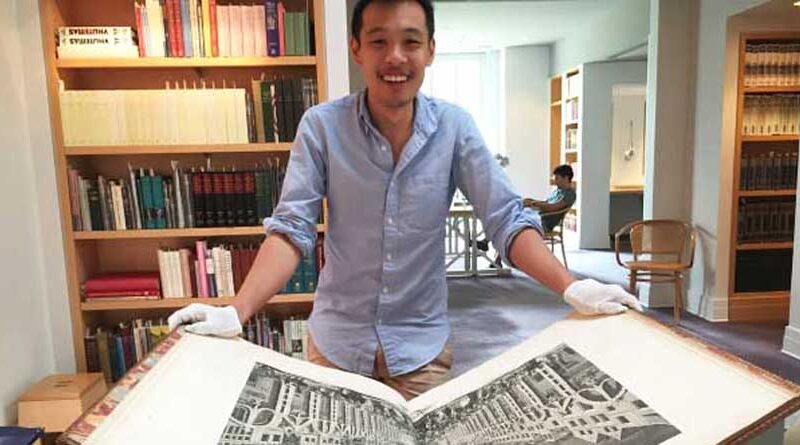Charlotte Professor Discovers A Breakthrough In Understanding 18th Century French Architecture
In a blend of serendipity and scholarly pursuit, UNC Charlotte Assistant Professor Matthew Gin’s accidental discovery in a Harvard University library has shed new light on the architectural intricacies of 18th century French royal ceremonies. His research, encapsulated in the article “Staging Sovereignty: Ephemeral Architecture and the Entry of Maria Teresa Rafaela into France, 1745,” recently featured in the Journal of the Society of Architectural Historians, navigates the pomp and grandeur of royal marriages, specifically through the lens of ephemeral architecture—temporary structures designed for single events or celebrations.
Gin’s journey into the past began with a fascination for French culture sparked during his undergraduate days at Oberlin College, where he majored in art history and Baroque flute. His passion for the relationship between performance and space eventually led him down an unexpected path. It wasn’t his intended study of French Baroque hedge mazes that captivated him, but rather a fortuitous mistake—a wrongly entered call number—that unveiled a treasure trove of architectural history.
Upon mistakenly receiving a hefty tome on a royal wedding instead of his requested read, Gin was drawn into the world of temporary architecture created for 18th century festivities. “My mind was exploding in that moment, seeing all of that material. I was hooked,” he recalls, mesmerized by the images of transient structures crafted for a royal remise—the ceremony marking a princess’s departure from her homeland to her new life with her husband.
In “Staging Sovereignty,” Gin explores the remise’s elaborate ceremonial architecture, from bridges to pavilions, erected on the Isle of Pheasants in the Bidasoa River, demarcating the French-Spanish border. These temporary edifices were not merely decorative; they were potent symbols of political power and diplomacy, meticulously designed to stage the sovereignty of the joining nations.
Gin underscores the ceremony’s role as “an amazing demonstration of the architectural underpinnings of diplomacy,” a space where political and architectural ingenuity intersected. This historical foray is more than an academic exercise for Gin; it’s a lens through which to view contemporary French culture, particularly as Paris gears up for the 2024 Summer Olympics. The city, according to Gin, is poised to revisit its tradition of ephemeral architecture, becoming “a space of creativity and invention” that will dazzle Olympic visitors with modern temporary structures.
Thus, a simple numerical mix-up has not only unraveled a fascinating chapter of French architectural history but also connected the dots to present-day cultural celebrations, proving that sometimes, the best discoveries are the ones we never meant to make.

